The Architectural Coatings Market is currently characterized by a dynamic competitive landscape, driven by a confluence of innovation, sustainability, and regional expansion. Major players such as Sherwin-Williams (US), PPG Industries (US), and AkzoNobel (NL) are actively shaping the market through strategic initiatives that emphasize product differentiation and technological advancement. Sherwin-Williams (US) has focused on enhancing its product portfolio with eco-friendly coatings, while PPG Industries (US) has prioritized digital transformation to streamline operations and improve customer engagement. AkzoNobel (NL) appears to be leveraging its global presence to expand into emerging markets, thereby enhancing its competitive positioning. Collectively, these strategies not only bolster individual company performance but also intensify competition within the market, as firms vie for leadership in sustainability and innovation.
In terms of business tactics, companies are increasingly localizing manufacturing to reduce lead times and optimize supply chains. This approach is particularly evident in the Architectural Coatings Market, which is moderately fragmented, with several key players exerting substantial influence. The collective actions of these companies suggest a trend towards consolidation, as firms seek to enhance operational efficiencies and market reach. The competitive structure is evolving, with a noticeable shift towards partnerships and collaborations aimed at fostering innovation and sustainability.
In August 2025, Sherwin-Williams (US) announced the launch of a new line of low-VOC architectural coatings designed to meet stringent environmental regulations. This strategic move not only aligns with the growing consumer demand for sustainable products but also positions the company as a leader in eco-friendly solutions. By investing in environmentally responsible technologies, Sherwin-Williams (US) is likely to enhance its market share and appeal to environmentally conscious consumers.
In September 2025, PPG Industries (US) unveiled a digital platform aimed at improving customer interaction and streamlining the purchasing process for architectural coatings. This initiative reflects a broader trend towards digitalization within the industry, suggesting that PPG Industries (US) is keen on leveraging technology to enhance customer experience and operational efficiency. The integration of digital tools may provide the company with a competitive edge, enabling it to respond more swiftly to market demands.
In July 2025, AkzoNobel (NL) entered into a strategic partnership with a leading technology firm to develop smart coatings that can monitor environmental conditions. This collaboration underscores AkzoNobel's commitment to innovation and sustainability, potentially setting a new standard in the architectural coatings sector. By focusing on smart technologies, AkzoNobel (NL) is likely to differentiate itself from competitors and cater to the evolving needs of the market.
As of October 2025, the Architectural Coatings Market is witnessing a pronounced shift towards digitalization, sustainability, and the integration of advanced technologies such as AI. Strategic alliances are increasingly shaping the competitive landscape, fostering innovation and enhancing product offerings. The emphasis appears to be moving away from price-based competition towards a focus on technological advancement, supply chain reliability, and sustainable practices. This evolution suggests that companies will need to continuously innovate and adapt to maintain competitive differentiation in an ever-changing market.


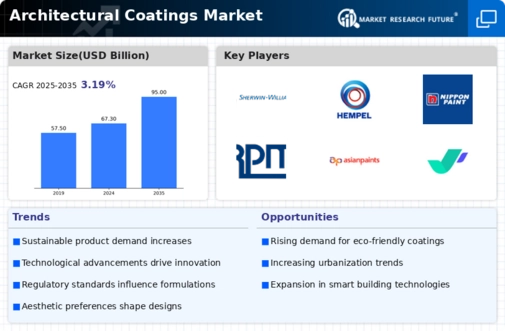
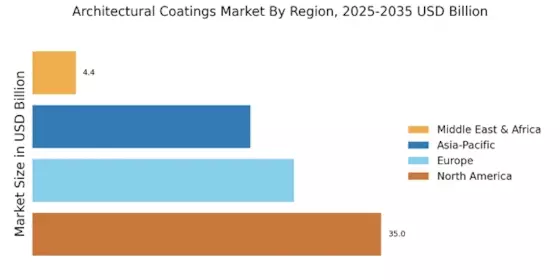


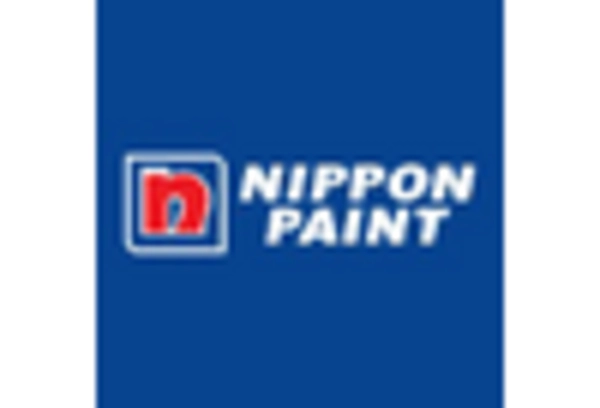
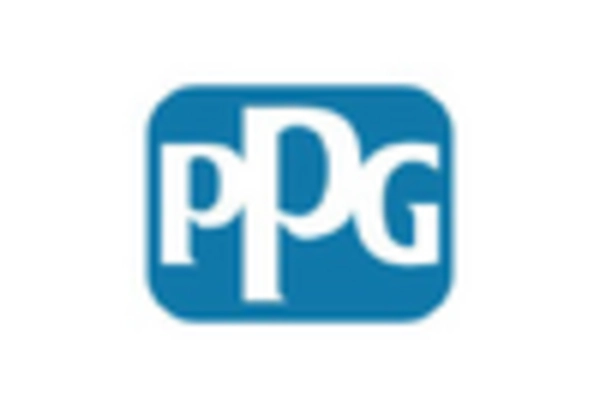

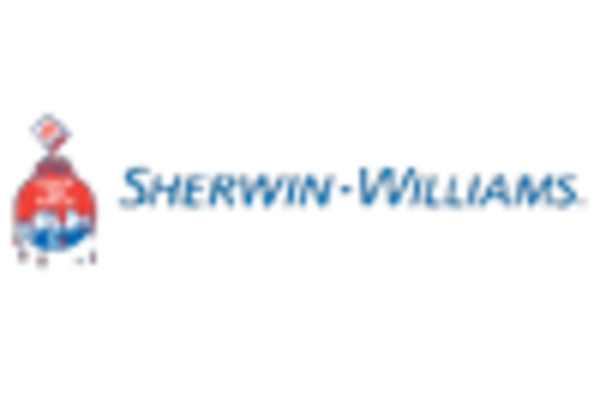








Leave a Comment